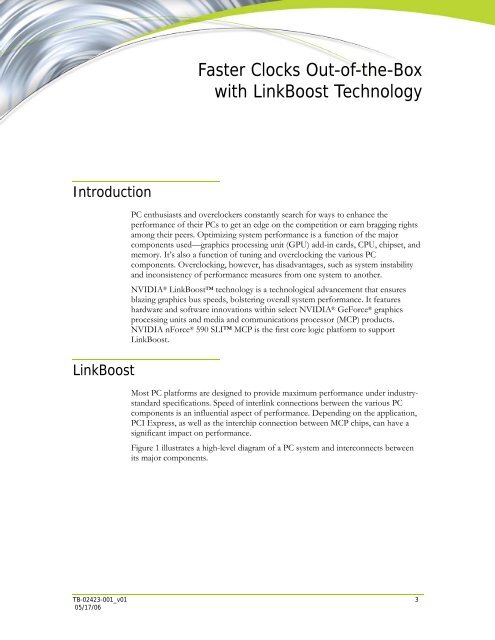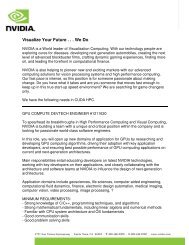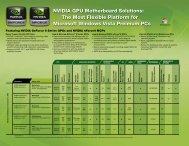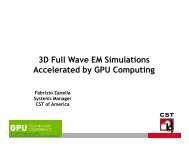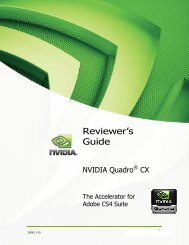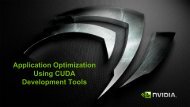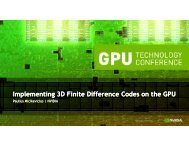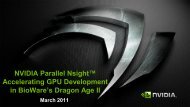Technical Brief
Technical Brief
Technical Brief
You also want an ePaper? Increase the reach of your titles
YUMPU automatically turns print PDFs into web optimized ePapers that Google loves.
Introduction<br />
LinkBoost<br />
Faster Clocks Out-of-the-Box<br />
with LinkBoost Technology<br />
PC enthusiasts and overclockers constantly search for ways to enhance the<br />
performance of their PCs to get an edge on the competition or earn bragging rights<br />
among their peers. Optimizing system performance is a function of the major<br />
components used—graphics processing unit (GPU) add-in cards, CPU, chipset, and<br />
memory. It’s also a function of tuning and overclocking the various PC<br />
components. Overclocking, however, has disadvantages, such as system instability<br />
and inconsistency of performance measures from one system to another.<br />
NVIDIA ® LinkBoost technology is a technological advancement that ensures<br />
blazing graphics bus speeds, bolstering overall system performance. It features<br />
hardware and software innovations within select NVIDIA ® GeForce ® graphics<br />
processing units and media and communications processor (MCP) products.<br />
NVIDIA nForce ® 590 SLI MCP is the first core logic platform to support<br />
LinkBoost.<br />
Most PC platforms are designed to provide maximum performance under industrystandard<br />
specifications. Speed of interlink connections between the various PC<br />
components is an influential aspect of performance. Depending on the application,<br />
PCI Express, as well as the interchip connection between MCP chips, can have a<br />
significant impact on performance.<br />
Figure 1 illustrates a high-level diagram of a PC system and interconnects between<br />
its major components.<br />
TB-02423-001_v01 3<br />
05/17/06


